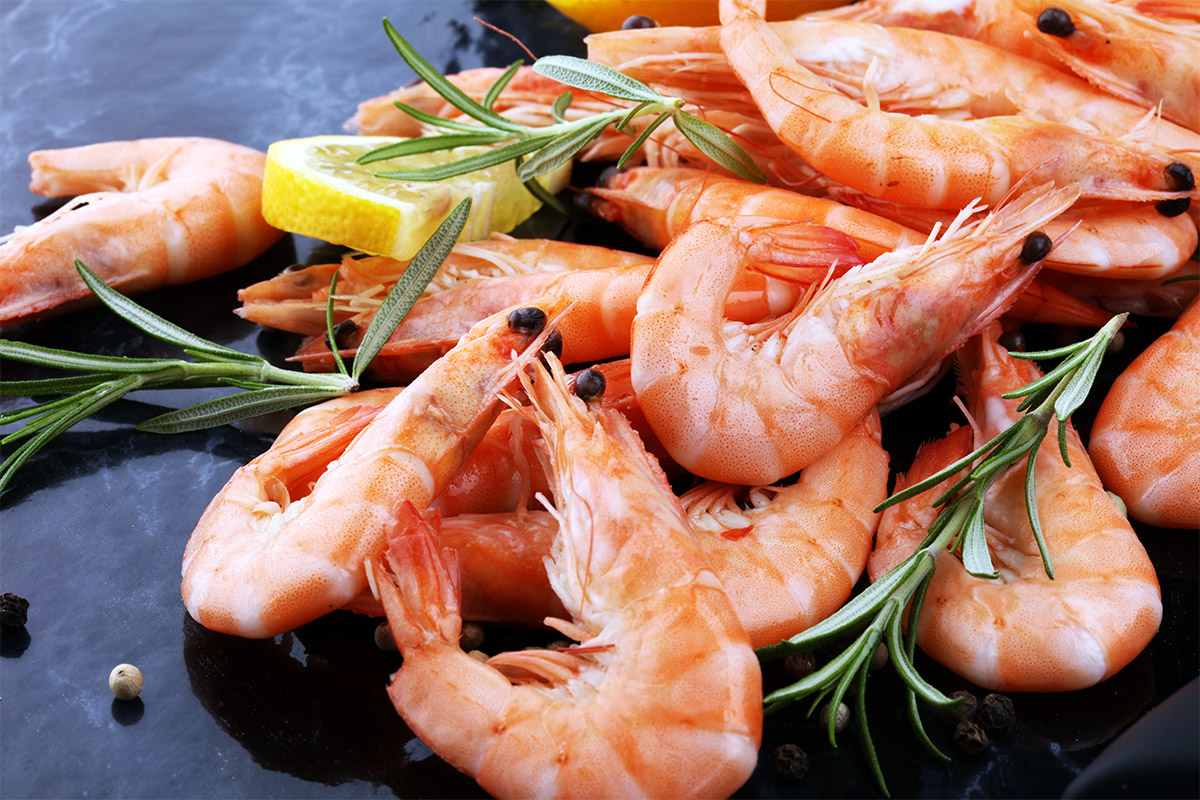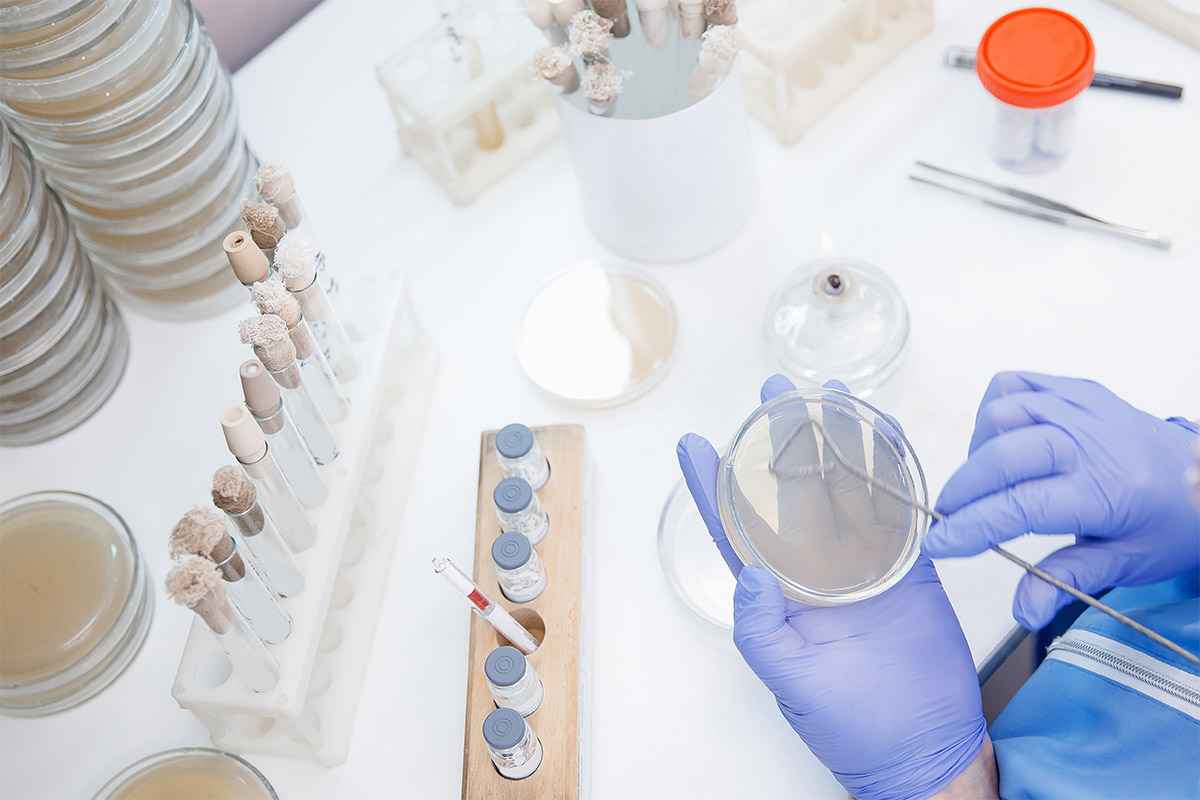We found that instead of all the chemicals that other people use in their products as preservatives, we could use the natural Kakadu plum to give us the commercial advantage.
Karen Sheldon

Bush Tucker, also referred to as 'bush food' and 'native food', is a term encompassing any wild animal, insect, plant and plant extract traditionally used as food by Indigenous Australians and Torres Strait Island people as sustenance in their traditional diets.
In current times, 'bush tucker' is also used to describe cooking based around ingredients taken from the Australian wilderness.
(P. Maunder. Help Yourself.The House of Wellness. March 2022)
A variety of traditional methods of processing and cooking bush tucker have been used to render the various foods edible, such as pounding vegetables and seeds or placing them in plant fibre bags in running water sources. Food was also cooked on open fires, baked in ground ovens or boiled in bark containers.
Well-known sources of bush tucker include animal foods like kangaroo, emu, witchetty grub, turtle and crocodile; fruit and vegetable plant foods such as quandong, kutjera (desert raisin), kakadu plum, yams (tubers), bush tomato, finger lime and warrigal greens; spices such as lemon myrtle; and bunya and macadamia nuts.

Little is known regarding Aboriginal uses of fungi; however, it has been established that they ate "beefsteak" fungus, a mushroom that resembles a slab of raw meat and used as a meat substitute. Native "bread" fungus grows in eucalyptus forests and rainforests and is regarded by Indigenous communities as a delicacy.
https://www.bushtobowl.com/
(C. Bussey.Food security and traditional foods in remote Aboriginal communities: A review of the literature. Australian Indigenous Health Bulletin 13 (2), 2013)
Dieticians Australia spokeswoman, Natasha Schilling, says research has revealed that native Australian ingredients are "great sources of different vitamins and minerals". Some are particularly rich sources, such as the Kakadu plum.
(from P. Maunder. Help Yourself. March 2022)
The Kakadu plum (Terminalia ferdinandiana)is a nutrient dense fruit that grows in the tropical woodlands of Northern Australia (Qld, WA, NT). It is also referred to as the billy goat plum, wild plum, green plum, salty plum, Murunga, Marnybi, Manmohpan, Kullari Plum and Gubinge.
It generally takes less than five years from seed for the Kakadu plum tree to bear fruit. It is suited to a natural hot and coastal environment with the highest concentration of trees found near the coast.
It grows as a small to moderate sized tree between 4-10 m high. The trunk has a rough, creamy grey bark, flaky and finely tessellated. The leaves are spirally arranged and dense towards the ends of the branchlets. The fruit is yellow to green and beaked, containing a single seed…Fresh fruit is available from Jan-July pending on region.
(from S. Hess-Buschmann et al. Kakadu Plum. Australian Native Foods and Botanicals, 2012. https://anfab.org.au/main.asp?_=Kakadu%20Plum )
The fruit can be eaten raw but has a slightly sour flavour, so it is more ideal for jams, sauces, juice or cooked as a dessert which gives it a stewed apple and pear aroma.However, it is now also available in fresh, powdered or frozen puree form.
The chemical properties of Kakadu plum contain both water-soluble and oil-soluble antioxidants. The plum has been scientifically tested by the University of Queensland and Edith Cowan University (WA) and proven to be an effective food preservative.
Darwin based businesswoman, Karen Sheldon, has run a catering company for more than 50 years:
We found that instead of all the chemicals that other people use in their products as preservatives, we could use the natural Kakadu plum to give us the commercial advantage.
Karen Sheldon
Sheldon's team uses freeze-dried Kakadu plum powder in many of the meals they make to send to remote communities.
Sarah Hickey, director at Sheldon Catering says, "It actually helps to extend the shelf life out to 12 months, at least."
(K. O'Brien & A. Levy. It's known to be a superfood but… ABC News, 22 Jul 2021. https://www.abc.net.au/news/2021-07-22/health-benefits-of-kakadu-plum/100204168 )

And Kakadu plum extract is now being used on prawns as a natural preservative.University of Queensland researchers, in cooperation with the Australian Prawn Farmers Association, have reported they were extremely pleased with the results.The plum improved the shelf-life and colour retention of prawns.
Researcher Dr Yasmina Sultanbawa maintains,"a lot of fresh foods have limited storage life":
The consumer trend is towards clean and green products, and so Kakadu plum is a natural antimicrobial, which means it can replace some of the chemical preservatives used by the (seafood) industry… the seafood industry wants cooked prawns to have a shelf-life in excess of 14 days and the Kakadu plum tests have been getting prawns up to 21 days before spoilage.
(Dr Sultanbawa in R. McConchie. Billy Goat Plums breed life… ABC Rural,17 Oct 2014. https://www.abc.net.au/news/rural/2014-10-17/rural-billy-goat-plum-prawns/5822316)
[T]he Kakadu plum (Terminalia ferdinandiana) is now recognised as the fruit with the highest recorded levels of natural Vitamin C (ascorbic acid) measuring 7000mg/100g DW. This constitutes 75 to 100 times more Vitamin C content than found in the common orange.
(D. Williams et al. Organic acids in Kakadu plum (Terminalia ferdinandiana): The good (ellagic), the bad (oxalic) and the uncertain (ascorbic). 2016)
Kakadu plums are also high in calcium and phenolic ellagic acid (EA),a phytochemical that is receiving increased attention for its nutritional and pharmacological potential as an antioxidant and antimicrobial agent.
The Kakadu plum also contains anti-nutrients such as oxalic acid (OA). Regular consumption of high oxalate foods poses a variety of health risks in some humans including interference with calcium absorption and causing kidney stone formation.
(D. Williams. 2016)

More recent research has been conducted to ascertain the potential negative impacts, if any, of OA on the absorption of Ascorbic Acid (AA), EA and calcium after eating Kakadu plums.
The research revealed that the content of AA was unchanged after the ingestion of Kakadu plums, while the content of other chemical components increased significantly from the gastric to the intestinal phase.
No significant changes (p > 0.05) were observed in total AA content throughout in vitro digestion, whereas bio accessibility of EA, OA, and calcium increased significantly from 33, 72, and 67% in the gastric phase to 48, 98, and 90% in the intestinal phase, respectively.
(S. Akter, et al. In vitro Bio accessibility and Intestinal Absorption of Selected Bioactive Compounds in Terminalia ferdinandiana. 2022)
People who might be more likely to have problems with oxalates include those who have:
(Reviewed by D. Brennan, MD. Health Benefits of Kakadu Plum. 25 October 2021. https://www.webmd.com/diet/health-benefits-kakadu-plum )
It is also advisable not to eat too many Kakadu plum seeds as they contain a small amount of toxins.
The Kakadu plum contains fibre,lutein,Vitamin E, folate, zinc, magnesium, copper and calcium. It contains no sugar.
Kakadu plum has five times higher anti-oxidant capability than the blueberry, which is renowned worldwide as the 'health-promoting fruit'.
Antioxidants are believed to hold a number of benefits for human health, potentially preventing and delaying diseases such as Alzheimer's disease, autoimmune and cardiovascular disease, cancer, and diabetes.
Kakadu plum also has a high potassium:sodium ratio, which may assist to develop foods to reduce hypertension.
(Focus on Kakadu Plums. Focus on Native Foods R&D. Australian Government (RIRDC), 2012. https://anfab.org.au/edit/research_publications/14-115_KakaduPlum.pdf)
Traditional owner David Hewitt who runs a business harvesting the fruit on his country at Daly River, south of Darwin. said sucking on a few plums was a traditional remedy for a cold or flu. The fruit has also been used traditionally to treat headaches.
(K. O'Brien & A. Levy. 2021)
Indigenous Australians have traditionally used the inner bark of the Kakadu Plum tree to cure skin ailments. It has been known to alleviate skin psoriasis, heal wounds, prevent fungal or bacterial infections and heal sores, boils and acne.

Further benefits include:
The Kakadu plum's antioxidant content has been used as an anti-ageing remedy and to protect skin against UV damage. Aboriginal communities and commercial beauty brands have also put Kakadu plum to use for hair products, face washes and cleansers, body lotions, hand cream and lip balm.
(fromD. Brennan MD. 2021)
Traditionally, Kakadu Plum is wild harvested; however, commercial plantations have now been established in Western Australia south of Broome and Wadeye in the Northern Territory.
In Western Australia, the main harvest time is January, although some trees have multiple flowerings and can produce fruit up until July. The Northern Territory harvest generally occurs in April.
Harvest is mostly carried out by hand. However, the hot and humid conditions of the wet season, often in remote locations where roads may be impassable at times, can cause issues with the availability of labour.
(from Focus on Kakadu Plums. 2012.https://anfab.org.au/edit/research_publications/14-115_KakaduPlum.pdf)
One Kakadu plum enterprise in WA has reported a significant increase in the quality and quantity of fruit grown on land managed according to traditional Indigenous practices.
In terms of storage, it is suggested that Kakadu plums need to be frozen within 24 hours of harvest to maintain size and quality,if they're going to be used for their functional properties.
A Kakadu plum processing plant in Darwin has business plans for producing the prawn shelf-life extender and also high Vitamin C snack bars, drinks and a powder.
There is also interest from major international health and cosmetic companies for Kakadu plum which is already used in locally made beauty products including cleansers, body lotions, hand cream and lip balm.
(from Focus on Kakadu Plums. 2012)
Bush tucker and bush medicine research has entered an unprecedented phase to identify potential nutritional and sustainable sources of native food, natural medicines and health products contained in the 6000 known plant and animal sources used by Indigenous Australians over millennia before European occupation of the continent.
Akter, Saleha et al. In vitro Bio accessibility and Intestinal Absorption of Selected Bioactive Compounds in Terminalia ferdinandiana. National Library of Medicine. USA, 2022. https://pubmed.ncbi.nlm.nih.gov/35155530/
Australian Native Food Industry Limited (ANFIL) www.anfil.org.au
Brennan, Dan MD. Reviewer. Health Benefits of Kakadu Plum in 'Nourish by WebMD' editorial contributors, 25 October 2021. https://www.webmd.com/diet/health-benefits-kakadu-plum
Bussey, C. Food security and traditional foods in remote Aboriginal communities. Australian Indigenous Health Bulletin. Vol 13 No 2, April 2013 - June 2013.
S. Hess-Buschmann. Kakadu Plum. Australian Native Foods and Botanicals. The Commonwealth of Australia, Rural Industries Research and Development Corporation (RIRDC) https://anfab.org.au/main.asp?_=Kakadu%20Plum
Cherikoff,Vic. The Bushfood Handbook. fp Bush Tucker Supply, 1993.
Focus on Kakadu Plums. Focus on Native Foods R&D. Australian Government (RIRDC), 2012. https://anfab.org.au/edit/research_publications/14-115_KakaduPlum.pdf
Isaacs, Jennifer. Bushfood: Aboriginal Food and Herbal Medicine. New Holland, 2002.
Low, Tim. Australian Nature Field Guide: Wild Food Plants of Australia. HarperCollins,1991.
Maunder, Patricia. Help Yourself. Wellness + Nutrition. The House of Wellness. Herald-Sun, 20 March 2022.
O'Brien, Kristy & Anna Levy. It's known to be a superfood but what exactly are the health benefits of the Kakadu plum? ABC News, 22 Jul 2021. https://www.abc.net.au/news/2021-07-22/health-benefits-of-kakadu-plum/100204168
Williams, David J. et al. Organic acids in Kakadu plum (Terminalia ferdinandiana): The good (ellagic), the bad (oxalic) and the uncertain (ascorbic). National Library of Medicine. USA, 2016. https://pubmed.ncbi.nlm.nih.gov/28460910/
Tucker Bush. Edible Australian Tucker Bush. https://tuckerbush.com.au/

Nov 27 2025
The Psychology Behind the Primacy Effect

Jun 24 2025
Microplastic Exposure: Bottled Water vs Tap

Jun 09 2025
Squats for aligning hips

Apr 29 2025
Creative Thinking

Jan 28 2025
How to talk to someone you disagree with

Jan 27 2025
Alcohol Causes Cancer

Jan 14 2025
The role of the Amygdala

Oct 04 2024
A Support Guide for Anorexia Nervosa

Jun 25 2024
Sleep better